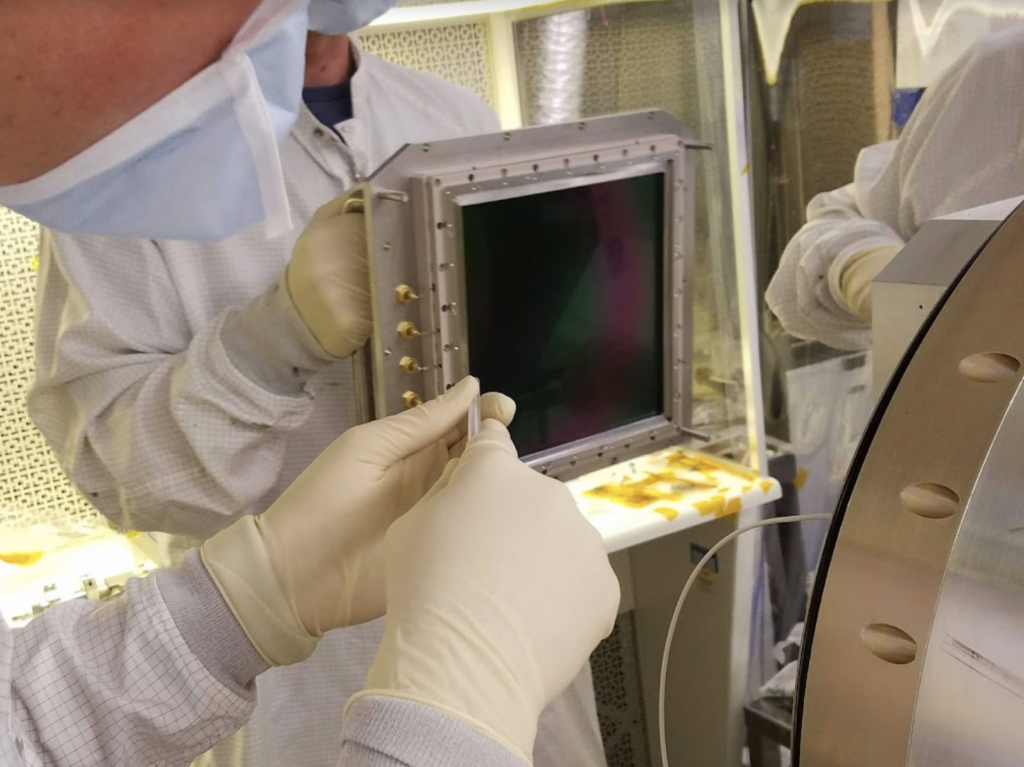Detector

Microchannel plate detectors (MCPs) are the workhorse detector for ultraviolet instruments. They have extremely low backgrounds, which increases your sensitivity to very dim astrophysical sources, and they operate in a “photon-counting” mode. This means that each and every detected photon is individually assigned an arrival time. This property is extremely useful for detecting transient events, such as stellar flares or supernova. MCPs were used on both FUSE and the Cosmic Origins Spectrograph (COS) on Hubble.
On COS, however, a disturbing drop in gain started appearing after a few years of operation centered around the geocoronal Lyman alpha spectral line. After years of nearly continuous exposure to this bright “airglow” line the COS detector started showing spots where the gain, and hence the sensitivity, were dramatically lower. This hasn’t greatly impacted the performance of COS because it is highly localized, but were this same effect to occur on a multi-object spectrograph like LUMOS on LUVOIR it would be catastrophic. New borosilicate glass MCPs operate at lower gain and therefore can tolerate orders of magnitude more exposure before this same “gain sag” effect manifests. These plates also have lower intrinsic background, which further increases sensitivity, and are stronger, enabling larger detectors over up to 200 x 200 mm to be built. All of these factors are critical for LUVOIR and enabling for a host of new science objectives.
SPRITE will be the first orbital system to use borosilicate glass MCPs for astrophysics, and thus the first to demonstrate resistance to continuous geocoronal Lyman alpha exposure. In fact, the SPRITE detector will be continuously exposed to Lyman alpha at a rate several factors higher than COS due to a larger field-of-view. The lower background of borosilicate MCPs is also essential for SPRITE, which is designed to maximize sensitivity above all else. The SPRITE mission will help qualify the gains of borosilicate glass MCPs for future missions, including the LUVOIR Surveyor. The MCP detector for SPRITE will be supplied by Osward Seigmund at Sensor Sciences LLC.